
“What Greece was first to Rome, then to the rest of the Mediterranean and European World,” argues Dalrymple, “so at this period India was to southeast and central Asia and even to China.” That this argument is not commonly associated with a foreign scholar—and has been assumed, wrongly, to be the sole domain of the vishwaguru school of hindutva history—makes it all the more compelling reading.
It is fair to say that conventional wisdom tends to focus on ancient India—the glories of the Vedas and the Puranas, the flourishing of Hinduism, Buddhism and Jainism, and the triumphs of a handful of emperors, notably Chandragupta, Ashoka, Kanishka and Vikramaditya—from a fairly insular perspective, confining their impact to the subcontinent and largely omitting their influence on the rest of the world. It is also widely assumed that by the sixth or seventh century CE a national decline had set in, leaving India vulnerable to the Islamic conquests that began with the invasion of Sind by the youthful Arab general Mohammed bin Qasim in 712 CE.
This story is from the November 17, 2024 edition of THE WEEK India.
Start your 7-day Magzter GOLD free trial to access thousands of curated premium stories, and 9,000+ magazines and newspapers.
Already a subscriber ? Sign In
This story is from the November 17, 2024 edition of THE WEEK India.
Start your 7-day Magzter GOLD free trial to access thousands of curated premium stories, and 9,000+ magazines and newspapers.
Already a subscriber? Sign In

Why Trump covets Greenland
There’s no denying it. Donald Trump is a prince among real estate developers, known for his pushy, winner-takes-all approach.
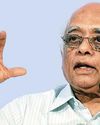
Bomb man who kept his mouth shut
The best thing about Rajagopala Chidambaram, who passed away recently, was that he “could keep his mouth shut”, as his mentor Raja Ramanna wrote in his memoir, Years of Pilgrimage. No wonder, he tested six atom bombs with no CIA, ISI or satellite spy eyes getting any wiser beforehand.
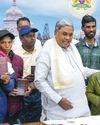
Extreme to mainstream
With the recent surrender of six Naxals, Chief Minister Siddaramaiah declares Karnataka almost “Naxal-free”. The BJP is questioning his “closeness” to the far left
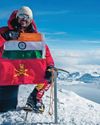
SUMMITS, SURVIVAL AND SERVICE
Mountaineering expeditions play a crucial role in mountain warfare training
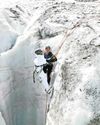
EYES ON THE ICE
THE INDIAN ARMY TRAINS ITS MOUNTAIN WARRIORS AT THE MACHOI GLACIER WHERE THEY LEARN ICE AND SNOW CRAFT IN SUB-ZERO TEMPERATURES. THE HIGH ALTITUDE WARFARE SCHOOL IN GULMARG PREPARES THEM FOR WARS THAT ARE DRIVEN BY TECHNOLOGY AND INTELLIGENCE. ON SNOW-COVERED BATTLEFIELDS LIKE THE HIMALAYAS, THE ARMY WANTS ITS JUNIOR LEADERSHIP TO BECOME DECISION-MAKERS AT THE TACTICAL LEVEL

Time to dream big
Every year, January 12 is celebrated as National Youth Day—as homage to the birth anniversary of Swami Vivekananda, honouring his enduring teachings and visionary ideas.

Climbing the power ladder
In his latest book, T.V. Paul explores India's search for its day in the sun as a global power

Howdy, rowdies
The world is already exhausted, and Donald Trump has not even begun his second term.

The going gets rough
It’s been a very macho fortnight
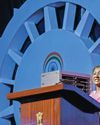
Eastward Ho!
Odisha, which hosted this year's Pravasi Bharatiya Divas, is emerging as a focal point for India's Act East Policy, given the turmoil in the northeast